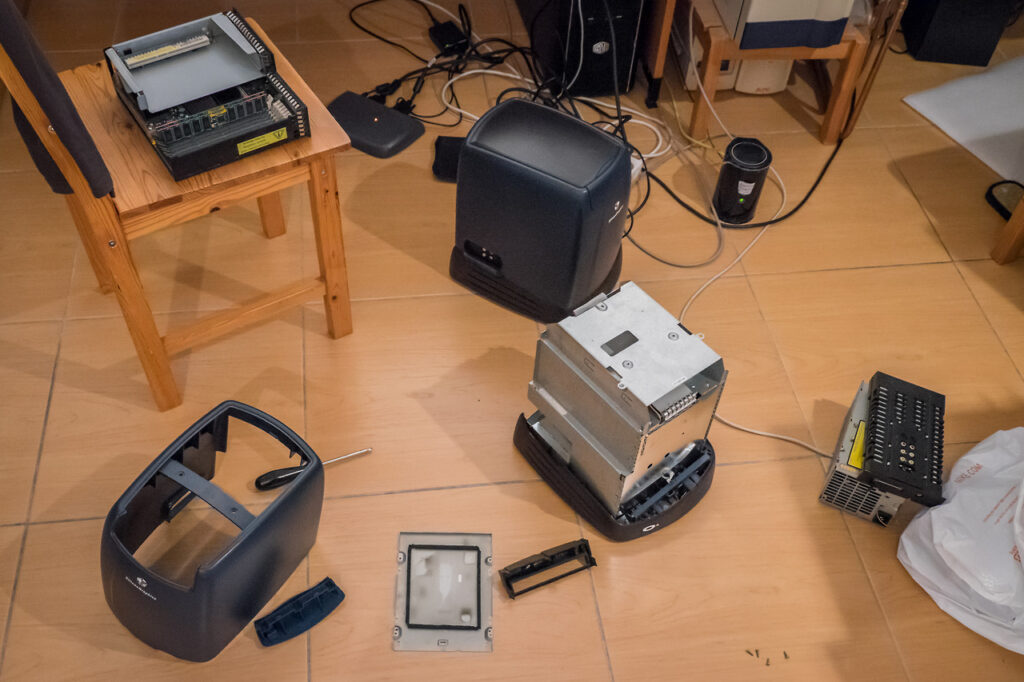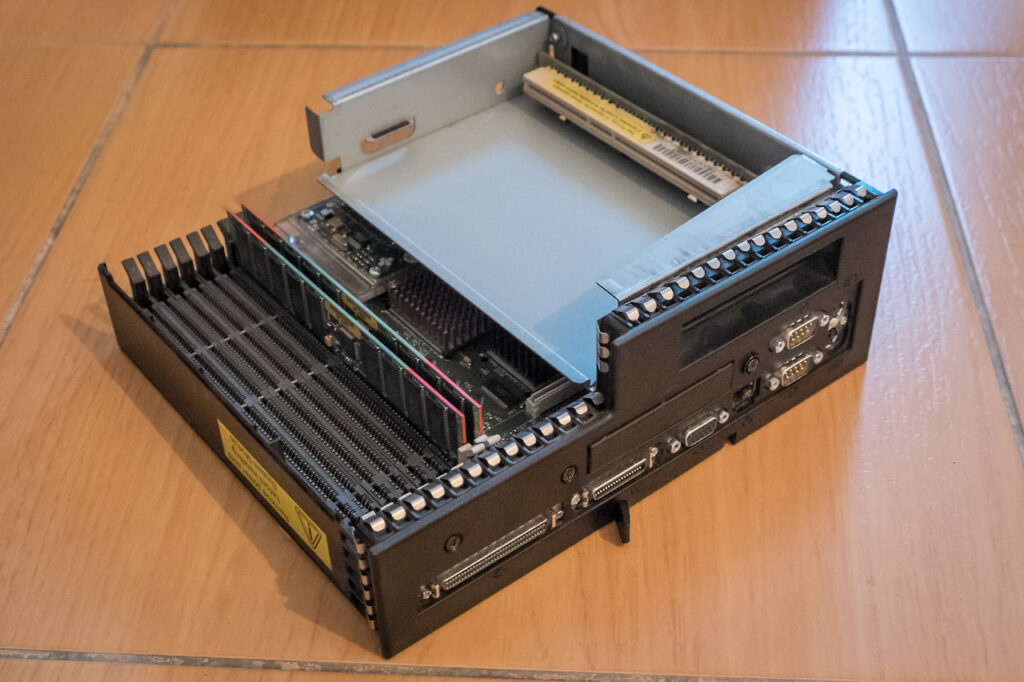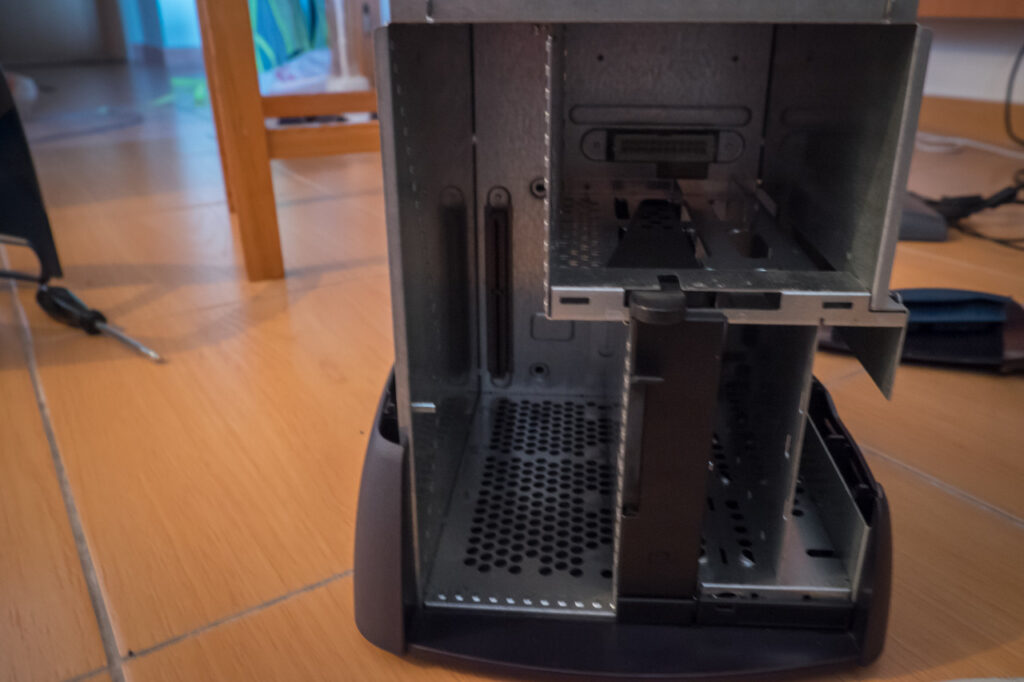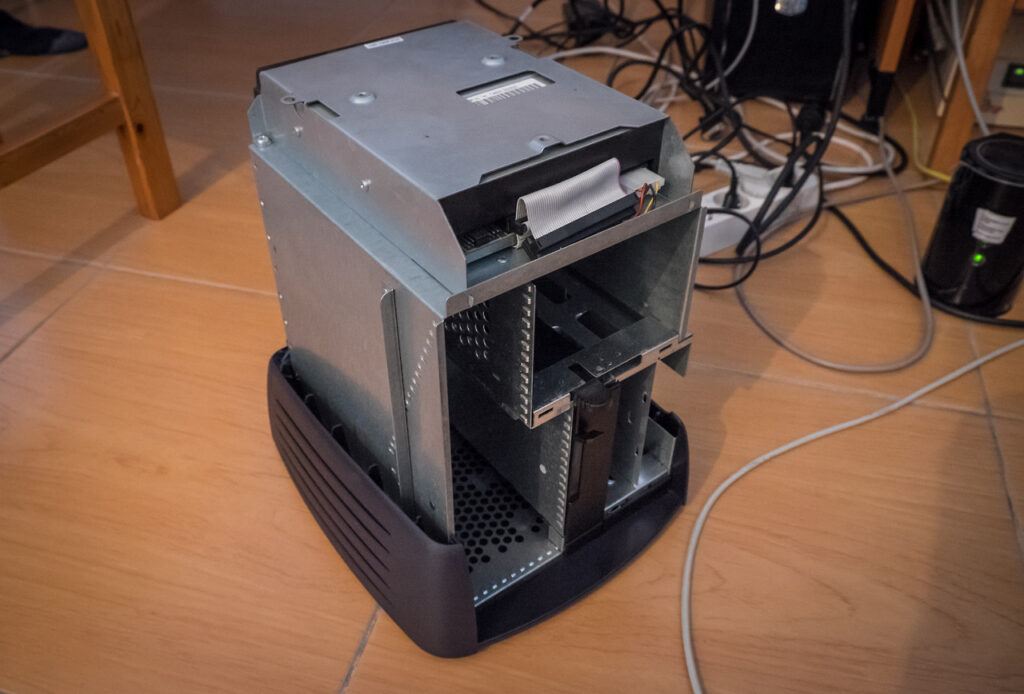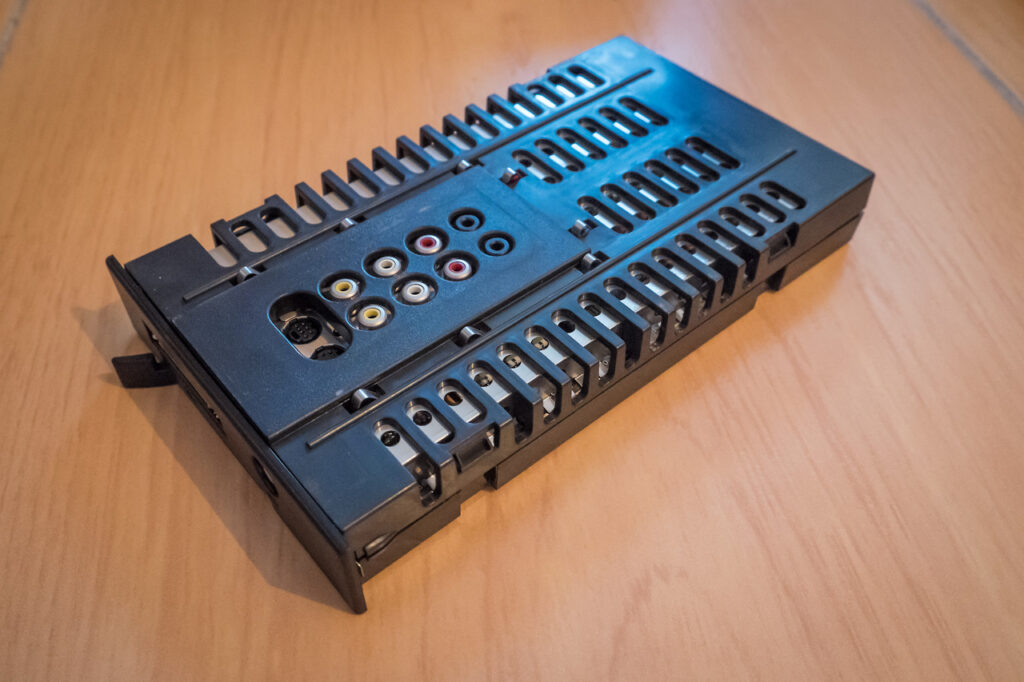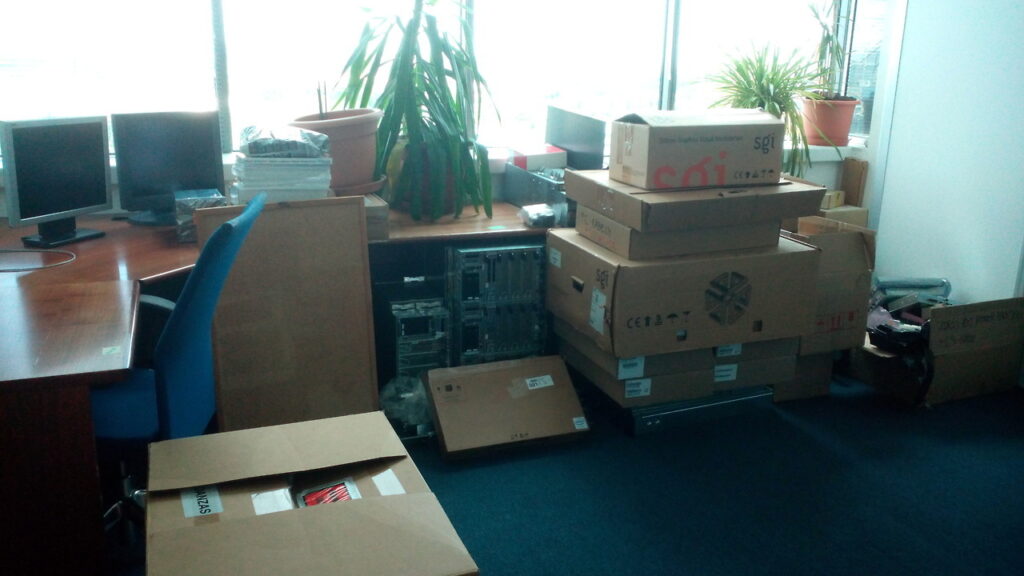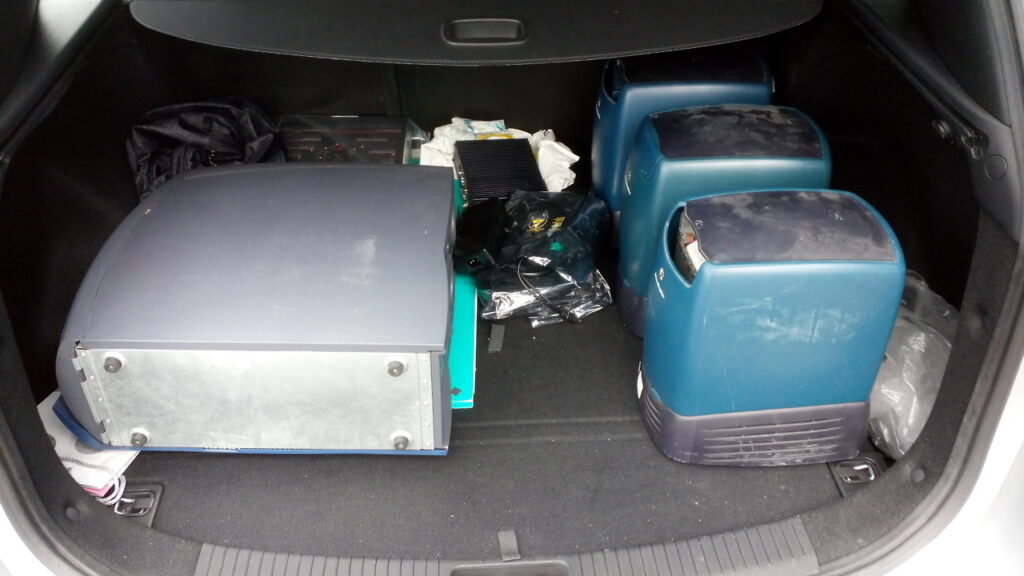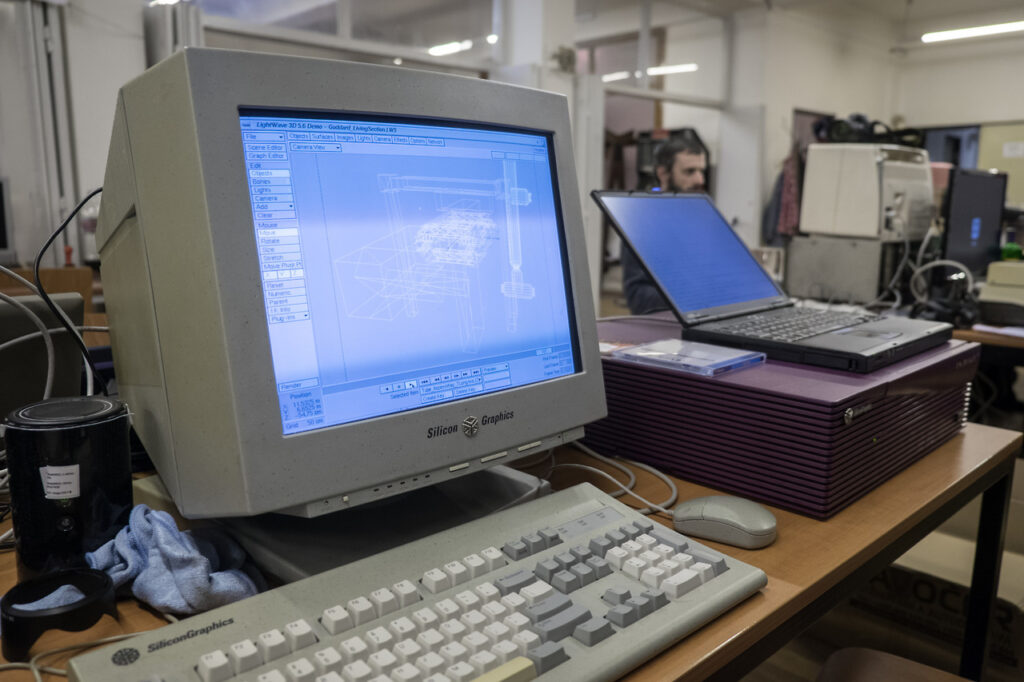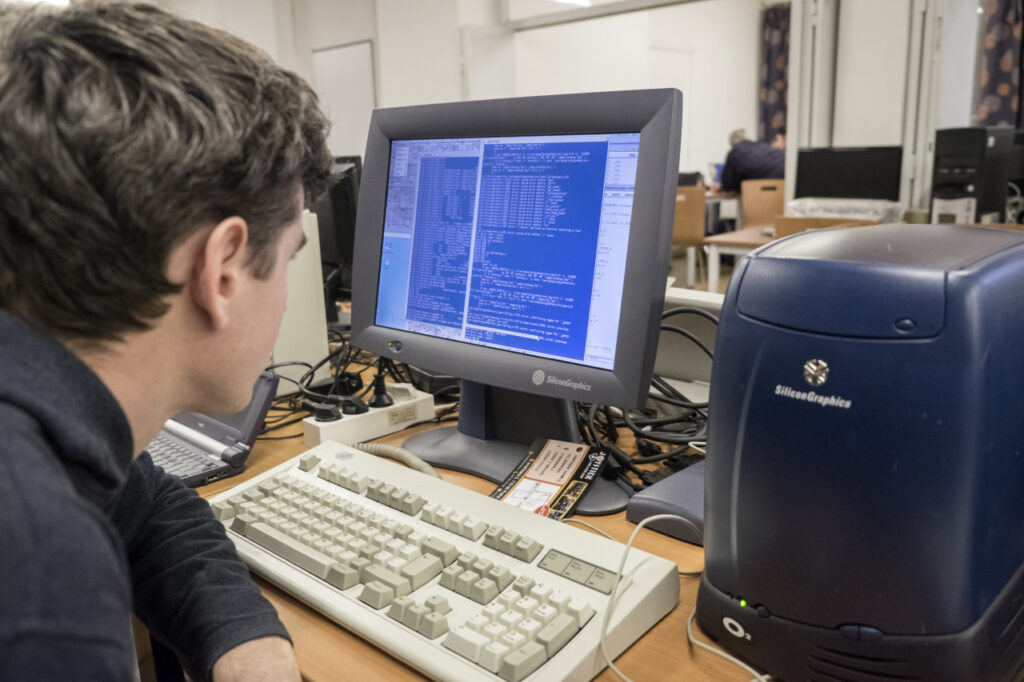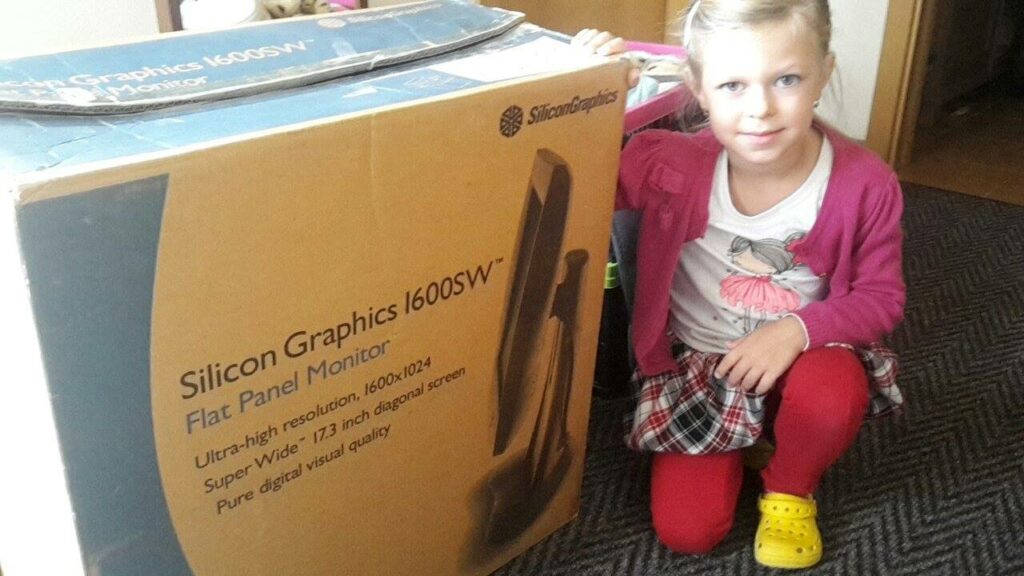Inside the SGI O2 UNIX Workstations
SGI O2 was designed as a small low-cost workstation. This is clearly visible on its internal hardware architecture with unified memory shared between the graphics chipset, CPU, and add-on video grabber. I like the smart design of the case. Everything is easily accessible (except for the CD-ROM drive which needed to be fixed). You can replace the mainboard or hard drives quickly and without any tool.
Btw two of the three mainboards are alive so at least two machines will work. Two working boards are equipped with 180-MHz MIPS R5000 (one in a version without L2 cache). These CPUs were the lowest available options.
